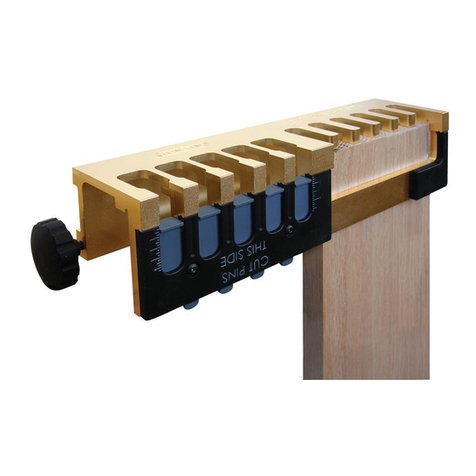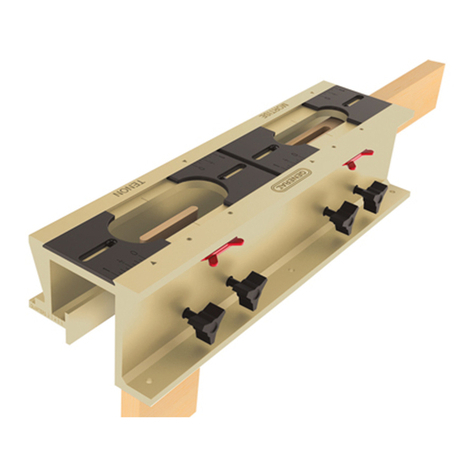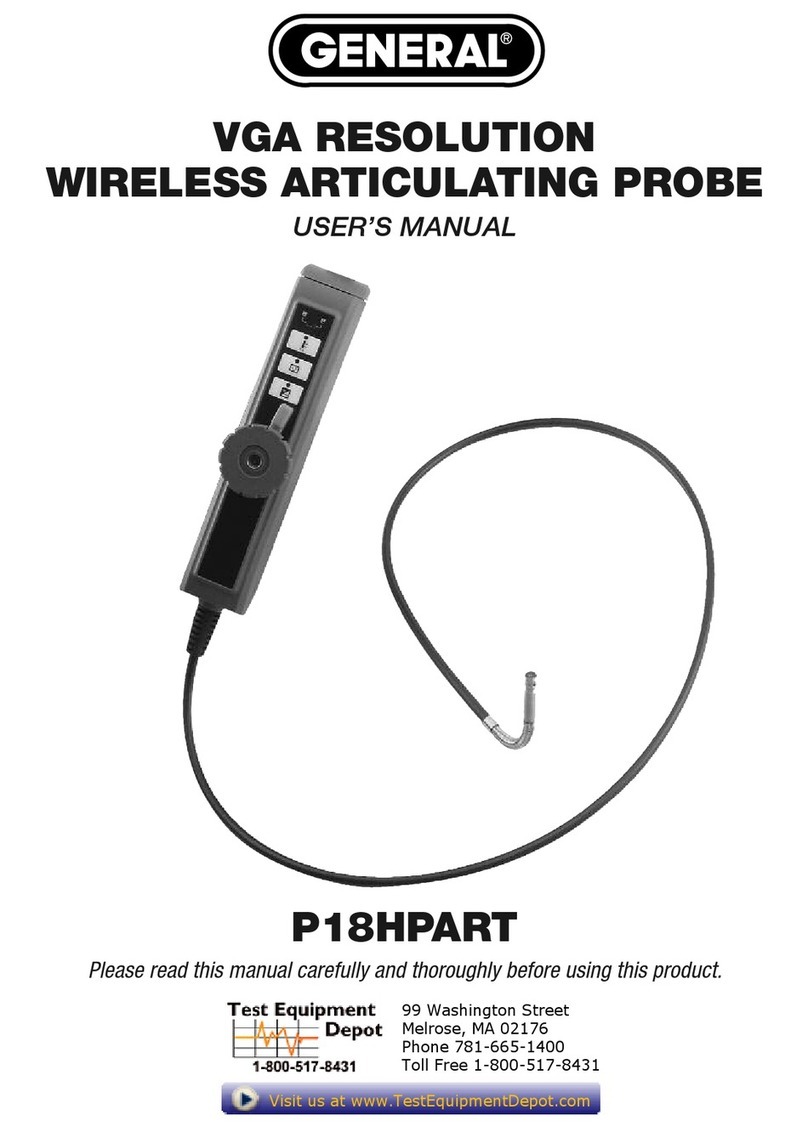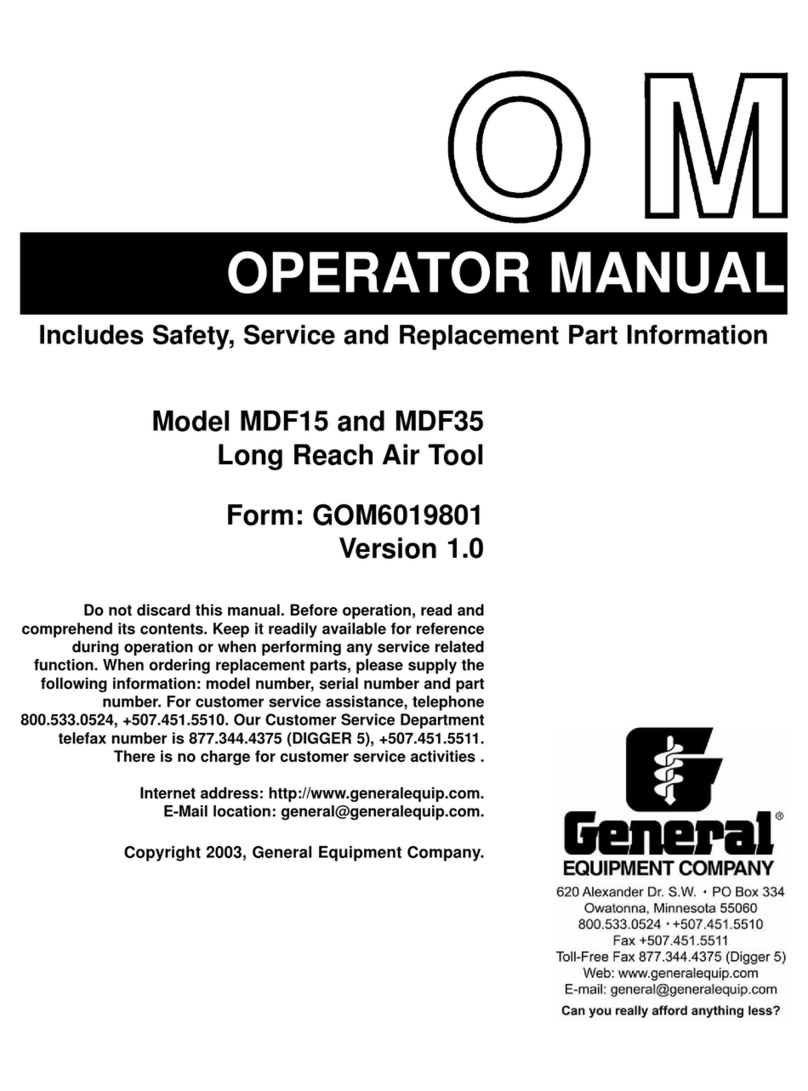1. Do not operate the saw when tired, distracted, or
under the effects of drugs, alcohol or any medica
tion that impairs reflexes or alertness.
2. The working area should be well lit, clean and free
of debris.
3. Keep children and visitors at a safe distance when
saw is in operation; do not permit them to operate
the saw.
4. Childproof and tamper proof your shop and all
machinery with locks, master electrical switches
and switch keys, to prevent unauthorized or unsu-
pervised use.
5. Stay alert! Give your work your undivided attention.
Even a momentary distraction can lead to serious
injury.
6. Fine particulate saw dust is a carcinogen that can
be hazardous to health. Work in a well-ventilated
area and whenever possible use a dust collec-
tor and wear eye, ear and respiratory protection
devices.
7. Do not wear loose clothing, gloves, bracelets, neck-
laces and ornaments while saw is in operation.
8. Be sure that adjusting wrenches, tools, drinks and
other clutter are removed from the machine and/or
the table surface before commencing operation.
9. Keep hands well away from saw blade and all
moving parts. Use a push stick to feed stock, and
use a brush, not hands, to clear away chips and
sawdust.
10. Be sure that saw blade is securely locked, and in
proper cutting direction, before operation.
11. Use recommended-speed, saw blade and acces-
sories for the working material.
12. Be sure the blade has gained full operating speed
before beginning to cut.
13. Always use a clean, properly sharpened blade.
Dirty or dull blades are unsafe and can lead to
accidents.
14. Do not push or force stock into the cutting blade.
The saw will perform better and more safely when
working at the rate for which it was designed.
15. Use suitable support when cutting stock that does
not have a flat surface. Always hold stock firmly
against the fence when ripping, or against the miter
gauge when cross-cutting.
16. To minimize risk of injury in the event of work piece
kickback, never stand directly in-line with the blade
or in the potential kickback path of the work piece.
17. Avoid working from awkward or off balance
positions. Do not overreach during cutting opera-
tion; keep both feet on floor. Never lean over or
reach over the blade and never pull the work piece
over the blade from behind. Use outfeed support or
have an assistant help when ripping long material.
18. Keep blade guards in place and in working order.
If a guard must be removed for maintenance or
cleaning, be sure it is properly reattached before
using the tool again.
19. Never leave the machine running with the power
on when not in operation.
20. If using a power feeder, stop the feeder before
stopping the table saw.
21. Use of parts and accessories NOT recommended
by General® International may result in equipment
malfunction or risk of injury.
22. Never stand on machinery. Serious injury could
result if the tool is tipped over or if blade is uninten-
tionally contacted.
23. Always disconnect tool from power before servicing
or changing accessories such as a saw blade, or
before performing any maintenance, cleaning
or adjustments, or if the machine will be left
unattended.
24. Make sure that switch is in the “OFF” position before
plugging in the power cord.
25. Make sure tool is properly grounded. If tool is
equipped with a 3-prong plug it should be used
with a three-pole receptacle. Never remove the
third prong.
Rules for Safe Operation
To help ensure safe operation, please take a moment to learn the machine’s applications and limita-
tions, as well as potential hazards. General® International disclaims any real or implied warranty and
hold itself harmless for any injury that may result from the improper use of it’s equipment.




































